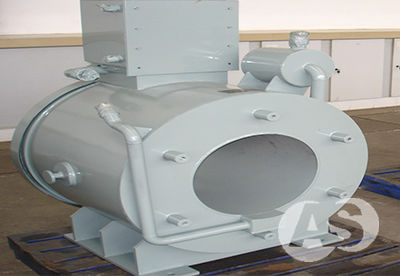Electromagnetic Stirrer (EMS)
The essence of electromagnetic stirring is to agitate molten steel in casting blank, therefore to change and optimize the transfer of molten steel and heat exchange in the casting blank, and finally achieve targets of quality improvement and higher productivity.
Electromagnetic Stirrer (EMS) is widely used on casters to improve quality of billets/blooms or slabs, and productivity of steel production. Specific improvements include surface/subsurface cleanliness, segregation, non-metal inclusions, porosity, inter-columnar cracking, grain/structure refinement, shell thickness uniformity, breakouts frequency, and machine throughput.
But EMS is not a panacea. The metallurgical effects of casting are closely connected with the various conditions of continuous casting. Hence the controlling of metallurgical effects still basically depends on metallurgical science and technology applied. EMS can help loosen some demands of technological conditions.
EMS system equipments consist of the following five major parts:
1. Power pack, including transformer and high, low voltage power distributor;
2. Frequency Convertor
3. Stirrer;
4. Monitor/controller;
5. Cooling water system.
Installation Positions on Caster
In principle, electromagnetic stirrers may be installed at any positions of a caster, whereas a reasonable position selected is not only very important for obtaining the better metallurgical effects, but also is related to the investment cost of CCM.
The followings are schematics about where an EMS is installed on a caster:
Electromagnetic stirrers for billets/blooms:
1. Mould area electromagnetic stirrer (MEMS);
2. EMS along strand (SEMS)

